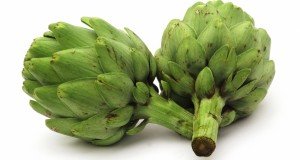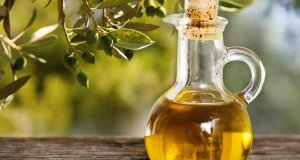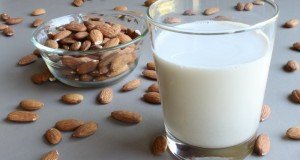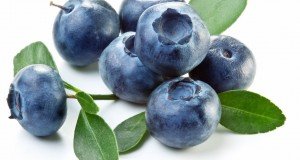The Ayurvedic Diet: How seasonal eating habits can help you prevent cancer
(NaturalHealth365) Today, we’ll take a closer look at the Ayurvedic diet, seasonal eating and how that can help us to prevent cancer.
Most of us change some aspect of our day-to-day lives according to the seasons. In winter, the heavy jackets come out of the closet while in summer in most parts of the world, it’s time for shorts and flip flops. Wouldn’t it make practical sense, then, that our eating habits should also change according to the seasons?
Ayurvedic seasonal eating means eating food that is in alignment (both physically and energetically) with a particular time of year. The majority of the world has adopted the Standard American Diet with devastating results, including off-the-charts rates of diabetes, heart disease, neurological disorders and cancer.
So, the question remains, could Ayurvedic seasonal eating provide an answer for disease-free living and better overall health?
Discover the “the science of life” within Ayurvedic medicine
Ayurveda is based on preventative health and is concerned with harmonizing all aspects of a person’s mind, body and spirit, not just the physical body. It sees the body as consisting of natural elements: fire, water, air, earth and ether (space).
The way these elements express themselves are called Doshas: Vata, Pitta and Kapha. In Ayurveda, each individual is unique and will express the Doshas differently. At the same time, each Dosha also corresponds to specific functions in the body.
The Pitta Dosha is connected to water and fire as well as to metabolism (including cellular metabolism). Kapha is ruled by water and earth and is responsible for the health of the spinal and cerebral fluid, the growth of new tissue and the mucosal lining of the stomach. Vata is associated with the air and ether so it governs all movement within the body, including nerve impulses, respiration, elimination and circulation.
Understanding your Dosha type brings deeper meaning to life
Imbalanced Doshas can lead to disease while balanced Doshas lead to health and vibrancy. Ayurvedic Ritucharya is a systematic way to balance the Doshas through eating habits designed to be in alignment with the rhythms of nature (which are also our own natural rhythms).
In Ritucharya, each season corresponds to the Dakshinayana, or the gradual movement of the earth around the sun, and seasonal changes correspond to particular tastes and changes in the Doshas. The summer months, for example, involve an “accumulation” and then an “aggrevation” of Pitta, which can lead to common summertime aggravations such as skin rashes, inflammation and fevers.
In response, Ayurvedic Ritucharya recommends eating Pitta-calming foods during the hot summer months, such as fruits and vegetables, ghee (which Ayurveda considers as “tridoshic”), sweet foods, and astringent and bitter tastes, such as lemon and coconut water.
Is the Ayurvedic diet being destroyed by ‘modern’ lifestyle habits?
Even in the birthplace of Ayurveda, the S.A.D. diet is taking its toll. According to an August 2011 report published in AYU, the international quarterly journal for research in Ayurveda: “The World Health Organization has identified India as one of the nations that is going to have most of the lifestyle disorders in the near future,” especially for people younger than 40 who have adopted Western lifestyles.
Young members of urban Indian society have one of the fastest growing rates of diabetes and pre-diabetic conditions on the planet. The report, like many others, is a call to action away from this trend. Yet, you don’t have to learn an ancient system of healing to reap the benefits of seasonal food.
Whether or not you practice Ayurvedic Ritucharya, changing your eating habits to focus on what’s fresh and in season just makes practical sense!
Here are four reasons why eating what’s growing in your region – right now – is a good idea no matter where you live:
- Organic, regional and in season vegetables have more nutritional value. The international Quality Low Impact Food Report, one of the largest studies to analyze commercial produce versus locally-grown organic produce, found that the organic produce contained up to 40 percent more antioxidants and significantly higher levels of essential minerals.
- In-season, organic produce usually travels less miles to get to you. Sustainable food writer and researcher Brian Halweil states in his book Eat Here: Homegrown Pleasures in a Global Supermarket: “If you harvest something early so that it can endure a long distance shipping experience, it’s not going to have the full complement of nutrients it might have had.”
- Eating what’s in season supports healing. This is because nature has designed it this way! Think about apples, which grow in the fall in many regions of the U.S. They can help the body cool down before winter. On the other hand, a springtime abundance of leafy greens is alkalizing and detoxing while the cucumbers and melons that typically grow in summer help our bodies to stay cool and many are considered anti-inflammatory as well. A 2003 UC-Davis study also found that organic foods are simply better overall for cancer-prevention.
- Food that is organic and in season tastes better. If you have ever taken a bite of a home-grown tomato, you know what I am talking about. The taste alone could make you want to visit your local farmer’s market or grow your own veggies, even if all you have is a porch, a pot and some garden soil! Speaking of growing your own, did you know that studies have indicated that gardening can actually help your gut and prevent depression?
- Buying food that is in season puts you in better touch with your community. Do something fun with your family this weekend that also supports better eating habits as well as local agriculture and the environment: attend a local farmer’s market to get those in-season veggies, fresh fruits, cheeses and meats. According to a 2014 study done by the United States Food and Drug administration, the number of farmer’s markets in the United States rose to over 8,000 in that year compared to a little under 2,000 in 1994. Most markets tend to be located in densely-populated areas, so chances are, there is one near you!
Just keep in mind, the shelf-life organic produce is considerably shorter than commercially-harvested produce. This means that the nutritional value stays where it should be: in your food. Not only are organic foods pesticide-free, there is also less of a chance that the produce has not been irradiated, a common practice when foodstuff travels long-distance.
About the author: Dr. Veronique Desaulniers (“Dr. V”) is a best-selling author and specialist in Chiropractic, Bio-Energetics, Meridian Stress Analysis, Homeopathy and Digital Thermography. After 30 years in active practice, she decided to “retire” and devote her time to sharing her personal, non-toxic Breast Cancer healing journey with others. Her years of experience and research have culminated in “The 7 Essentials™ “, a step-by-step coaching program that unravels the mystery of healing the body. Her website and personal healing journey have touched the lives of thousands of women around the globe. To get your F.R.E.E. 7-day mini e-course and to receive her weekly inspiring articles on the power of natural medicine – visit: BreastCancerConqueror.com
References:
https://www.ncbi.nlm.nih.gov/pmc/articles/PMC3361919
https://ayurveda-foryou.com/clinical_ayurveda/ritucharya.html
https://lifehacker.com/why-eating-seasonally-and-locally-is-better-for-you-an-1563025065
https://www.ncbi.nlm.nih.gov/pubmed/12590461?dopt=Abstract
https://orgprints.org/10417/2/leifert-etal-proceedings-qlif.pdf
https://www.wikihow.com/Grow-Tomatoes-in-Pots
https://www.ers.usda.gov/data-products/chart-gallery/detail.aspx?chartId=48561&ref=collection&embed=True
https://en.wikipedia.org/wiki/Brian_Halweil
https://link.springer.com/article/10.1007/s001250100627











